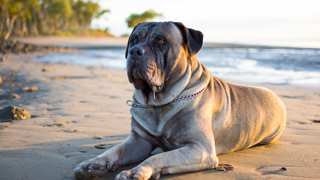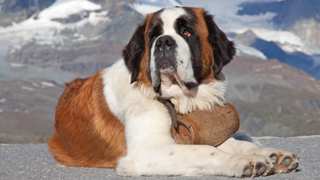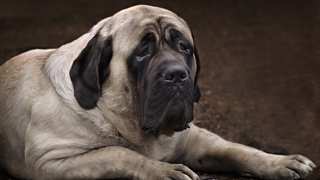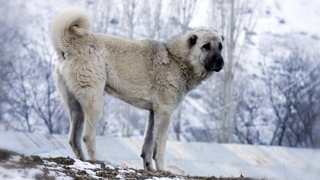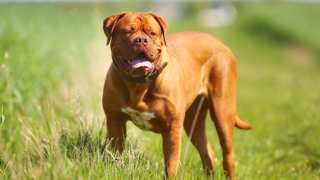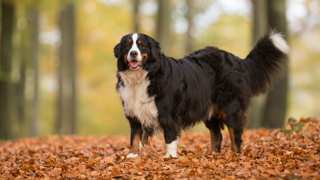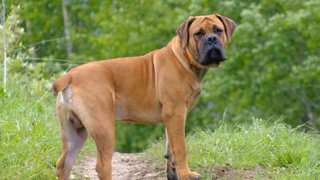The Neapolitan Mastiff diet, just as with its size, is expectantly huge. These dogs will need balanced amounts of animal proteins, carbohydrates, vitamins, minerals, and omega fatty acids--and a great deal of all those nutrients--to keep healthy and long-living. Though opinions differ, the most popular Neapolitan Mastiff food is premium dry kibble, particularly the kind made for large breeds; Blue Buffalo Large Breed and Wellness Large Breed are two recommended brands. Some owners say they mix in fresh bread, pasta, and fresh meat with their Neo's meals for added nutrients.
Two precautions concerning the Neo's diet need mentioning: first, this breed is highly susceptible to bloat, an often-fatal condition caused by a dog's stomach filling with excess air when the dog gulps its food. The condition occurs more frequently if a dog eats just before or after exercising, so owners are strongly advised not to feed their Neos for an hour before or two hours after an exercise session. Also, Neapolitan Mastiff puppies should not be fed puppy formula, as it usually contains too much protein for their developing bodies. It's best, veterinarians say, to begin feeding a Neo pup adult formula from the beginning.
And how much food will a Neapolitan Mastiff need each day? As expected, a great deal. The typical adult Neo, depending on its age, size, and activity level, will require at least five cups of dry food per day, divided into two meals. A Neo pup, again depending on its age, will need a little less: about 3½ cups per day, divided into three meals (not two) until six months of age. For further details on feeding these dogs from puppyhood through maturity, here's a Neapolitan Mastiff feeding guide:
Neapolitan Mastiff Feeding ChartDog AgeDog WeightFood TypeAmountFrequency2 Months25 lbsDry (Adult formula)0.5 cups3x/day3 Months45 lbsDry0.75 cups3x/day5 Months75 lbsDry1.25 cups3x/day7 Months95 lbsDry2 cups2x/day9 Months120 lbsDry2.25 cups2x/day12 Months140 lbsDry2.5 cups2x/day14 Months+160 lbsDry2.75 cups2x/dayTry to stick to the above-listed portions if possible. Though your Neo can probably eat a lot more, these amounts are ample enough--and a Neapolitan Mastiff that's constantly overfed will quickly become overweight, leading to breathing, joint, and digestive problems, not to mention an even shorter lifespan. You can help control your Neo's weight by having consistent feeding and exercise schedules, by not feeding the dog table scraps, and by not leaving food in the dog's bowl all the time, thereby allowing it to eat anytime it wants. It's better to put your Neo's bowl down only at mealtimes, then pick it up 20-30 minutes after the dog begins eating.
If you're worried your Neapolitan Mastiff is overweight, it probably won't be hard to tell. You can give the dog this test: run a hand along its side, and if you can't feel any ribs beneath all that loose skin, it's time for a diet. Reduce the dog's daily food consumption by one-fourth, and add an extra walk or play period to its daily exercise schedule.
